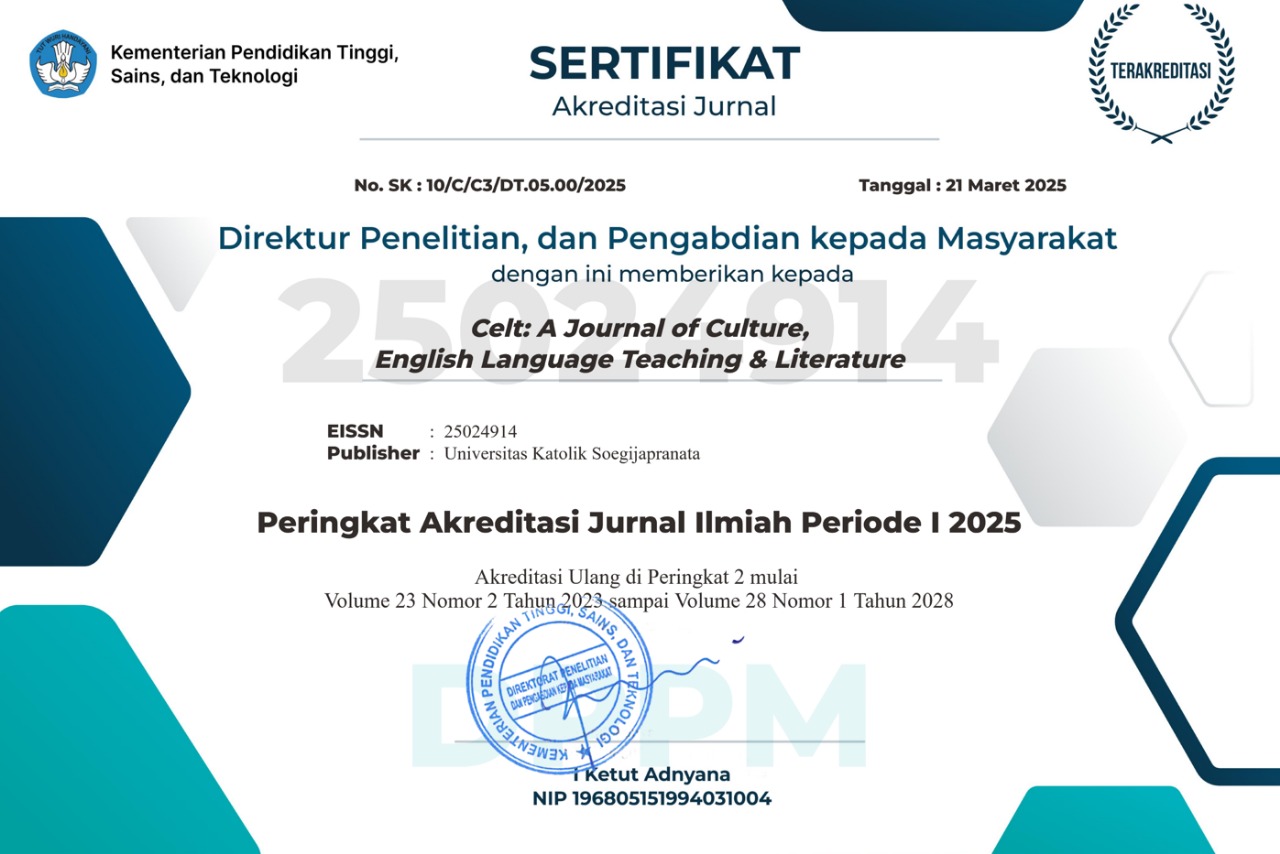Developing A Digital Learning Game as a Medium for Cultural Enrichment on Descriptive Text
Abstract
Keywords
Full Text:
PDFReferences
Adaskou, K., Britten. D., & Fahsi, B. (1990). Design decisions on the cultural content of a secondary English course for Morocco. ELT Journal, 44(1), 3–10.
Assyururia, M. (2011). Developing Reading Materials Using E-Learning XHTML Editor (EXE) in SMKN 2 Buduran Sidoarjo. TESIS Prodi Pendidikan Bahasa dan Sastra Inggris-Pascasarjana UNESA.
Baker, W. (2003). Should Culture Be an Overt Component of EFL Instruction Outside of English-Speaking Countries? The Thai Context. ASIAN EFL Journal, 25(2).
Beatty, K. (2010). Teaching & researching: Computer-assisted language learning. London: Routledge.
Borg, W.R., Gall, M.D., & Gall, J. P. (2003). Educational Research an Introduction (Second Edi). New York: Longman Inc.
Brown, H. D. (2000). Teaching by Principles: An Interactive Approach to Language Pedagogy (Second Edi). California: Longman.
Brown, H. D. (2004). Language assessment: Principles and classroom practices. New York: Longman.
Byram, M. (1997). Teaching and Assessing Intercultural Communicative Competence (Series ed). Clevedon: Multilingual Matters.
Crystal, D. (2014). Language Death. Cambridge: Cambridge University Press.
Dick, W., & Carey, L. (2001). The systematic design of instruction (5th ed.). New York: Longman.
Gay, L.R., Mills, G.E., & Airasian, P. W. (2012). Educational Research (Competences for Analysis and Applications, tenth edition). New York: Pearson Education, Inc.
Graddol., D. (2006). English Next. London: The British Council.
Hays, R. T. (2005). The effectiveness of instructional games: A literature review and discussion. (No. NAWCTSD-TR-2005-004). NAVAL AIR WARFARE CENTER TRAINING SYSTEMS DIV ORLANDO FL.
Heinich, R., Molenda, M., Russel, J.D., & S. S. E. (2002). Instructional Media and the New Technology of Instruction. New York: Macmilan Publishing Company.
Kemendikbud. (2013a). Peraturan Menteri Pendidikan Dan Kebudayaan Nomor 68. Tahun 2013 Tentang Kerangka Dasar Dan Struktur Kurikulum Sekolah Menengah Pertama/Madrasah Tsanawiyah. Jakarta: Kementrian Pendidikan dan Kebudayaan.
Kemendikbud. (2013b). Peraturan Menteri Pendidikan Dan Kebudayaan Republik Indonesia Nomor 81A Tahun 2013 Tentang Implementasi Kurikulum. Jakarta: Kementrian Pendidikan dan Kebudayaan.
Kemendikbud. (2014). Bahasa Inggris: When English Rings a Bell (Edisi Revi). Jakarta: Kementerian Pendidikan dan Kebudayaan.
Khamid, A. (2011). Developing Reading Tests Through Computer-Based Testing (CBT) in SMK PGRI. UNESA.
Kumaravadivelu, B. (2003). Beyond Methods: Macrostrategies for Language Teaching. New Haven and London: Yale University Press.
Lestari, L. A. (2010). Mengenalkan Aspek Budaya dalam Pembelajaran Bahasa Inggris. Pidato Pengukuhan Guru Besar Universitas Negeri Surabaya.
Prensky, M. (2001). Digital game-based learning. St. Paul: Paragon House.
Richards, J. C. (2001). Curriculum Development in Language Teaching. Cambridge: Cambridge University Press.
Utami, I. H. (2007). The Use of Computer Assisted Language Learning (CALL) Program for Maritime Vocabulary Learning in the Surabaya Merchant Marine School. UNESA.
Van den Akker, J. (1999). Principles and methods of development research. In Design approaches and tools in education and training (pp. 1–14). Netherlands: Springer.
Warschauer, M. (2004). Technological change and the future of CALL. In S. F. & C. Brown (Ed.), New Perspectives on CALL for Second and Foreign Language Classrooms (pp. 15–25). Mahwah, NJ: Lawrence Erlbaum Associates.
Weir, C. J. (2005). Language Testing and Validation: An Evidence-based Approach. New York: Palgrave Macmillan.
DOI: https://doi.org/10.24167/celt.v19i2.529
Copyright (c) 2018 Celt: A Journal of Culture, English Language Teaching & Literature
| pISSN (print): 1412-3320 | eISSN (online): 2502-4914 |











